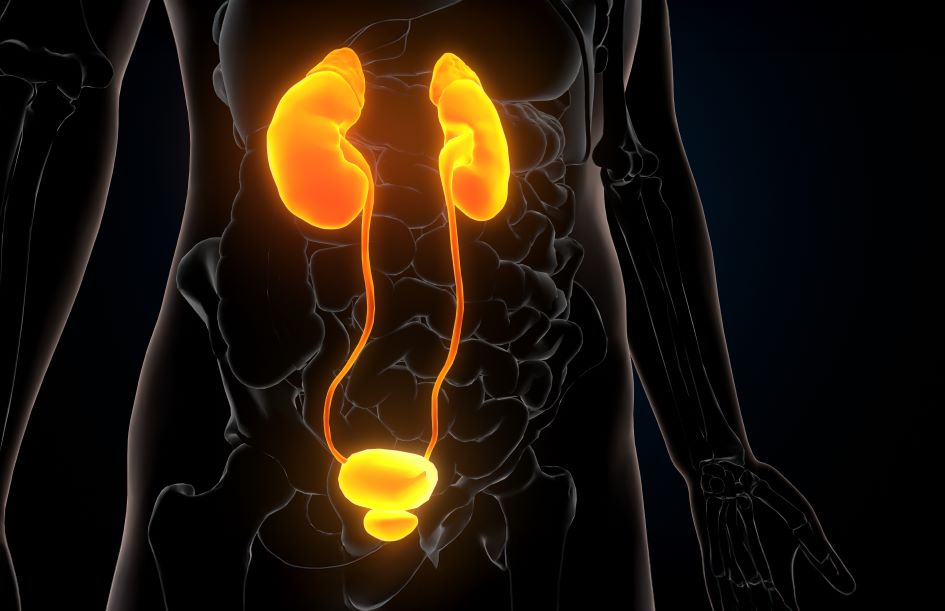Every year, 151 million people worldwide experience urethritis, with 62 million cases linked to gonorrhea and 89 million caused by other infections. These staggering figures highlight how common the condition is, yet many people continue to suffer in silence, unsure of what’s causing their discomfort or what to do about it.

Part of the problem is that early symptoms, like pain during urination or unusual discharge, are often ignored or misunderstood. This delay can lead to serious issues, including chronic inflammation, scarring, or infections spreading to other parts of the urinary or reproductive system. Recognizing the signs and acting quickly is key to preventing unnecessary complications.
In this guide, we’ll break down the causes of urethritis, how it’s treated, and the steps for identifying urethritis and preventing it. Whether you’re looking for answers or trying to stay informed, this is your essential resource. Let’s dive in!
What is urethritis and why should you care?
Urethritis is inflammation of the urethra, the tube that carries urine from your bladder out of your body. This condition targets the urethral lining, causing irritation and discomfort that can make urination painful or difficult. Common symptoms include a burning sensation during urination, an increased need to urinate, or discharge from the urethra.v

These symptoms can vary between men and women due to differences in anatomy. Urethritis isn’t just uncomfortable—it can lead to long-term problems like scarring, chronic infections, or even fertility issues if ignored. Recognizing it early is key to protecting your urinary health.
What are the types of urethritis?
Urethritis is generally categorized into two main types: gonococcal urethritis and nongonococcal urethritis. These classifications are based on the specific cause of the inflammation.
1. Gonococcal urethritis
This type of urethritis is caused by Neisseria gonorrhoeae, the bacterium responsible for gonorrhea. It is a sexually transmitted infection (STI) and often presents with more severe symptoms, such as:
- Thick, yellow-green discharge from the urethra.
- Painful or burning urination.
- Swelling or redness around the urethral opening.



Gonococcal urethritis is highly contagious and usually transmitted through unprotected sexual contact. Early diagnosis and treatment with antibiotics are essential to prevent complications such as pelvic inflammatory disease (in women) or epididymitis (in men).
2. Nongonococcal urethritis (NGU)
This type of urethritis is caused by other bacteria, viruses, or even irritants, excluding Neisseria gonorrhoeae. Common causes include:
- Chlamydia trachomatis (the most frequent cause of NGU).
- Mycoplasma genitalium.
- Viruses such as herpes simplex virus (HSV).
- Non-infectious factors like chemical irritants (e.g., spermicides, soaps) or physical trauma (e.g., catheter use).

Symptoms of urethral inflammation in men and women with NGU can overlap with those of gonococcal urethritis. However, they are often milder. These symptoms may include a burning sensation during urination, clear or whitish discharge, and frequent urination. NGU can also be sexually transmitted, but non-infectious causes highlight the importance of a proper diagnosis to guide treatment.
Is urethritis always an STI?
Many people think urethritis is always caused by sexually transmitted infections (STIs), but that’s not entirely true. Urethritis can indeed result from STIs like chlamydia or gonorrhea, which infect the urethra during unprotected sex. These cases are known as STI-related urethritis and require prompt treatment to avoid serious complications like fertility issues or pelvic inflammatory disease.
However, not all urethritis cases are linked to STIs. Non-sexual causes are common and include bacterial infections like E. coli, which can happen due to poor hygiene or improper wiping. Additionally, chemical irritants and physical factors, like prolonged catheter use, can further contribute to non-STI urethritis.
How to identify the signs of urethritis?
Urethritis symptoms vary between individuals and can range from mild discomfort to more noticeable pain and irritation. While some symptoms overlap between men and women, others are more gender-specific due to anatomical differences. The following symptoms are common in both men and women:
- Pain or burning during urination.
- Increased frequency or urgency to urinate.
- Discharge from the urethra, which may be clear, cloudy, or tinged with blood.
- Itching or irritation at the opening of the urethra.




Symptoms of urethritis in men
- Clear or yellow green discharge from the penis.
- Pain or swelling in the testicles.
- A burning sensation during or after urination.
Symptoms of urethritis in women
- Discomfort or burning during urination.
- Unusual vaginal discharge (sometimes confused with other vaginal infections).
- Pain in the lower abdomen or pelvis.
Women’s symptoms can sometimes be subtle, leading to delays in diagnosis and treatment.

What is the cause of urethritis?
The causes of urethral inflammation in men and women can vary widely, but they generally fall into three main categories: infectious, non-infectious, and underlying health conditions. Understanding these causes is essential for identifying and treating the condition effectively.
Infectious causes
Infections are the most common causes of urethritis, often spreading through unprotected sex or poor hygiene. Bacteria like gonorrhea and chlamydia, both sexually transmitted infections (STIs), are frequent culprits, while E. coli can infect the urethra due to poor hygiene or gastrointestinal cross-contamination. Viruses such as herpes simplex virus (HSV) can cause recurring urethral inflammation, and cytomegalovirus (CMV), though less common, can also lead to urethritis.
Non-infectious causes
Not all urethritis cases are caused by infections; everyday habits and exposures can contribute too. Chemical irritants like scented soaps, spermicides, or lubricants can inflame the urethral lining, with bubble baths or harsh hygiene products being common triggers. Physical irritation from prolonged catheter use, vigorous sexual activity, or cycling can also lead to inflammation.



Underlying conditions
Chronic health problems can raise the risk of urethritis. Autoimmune diseases like lupus can cause inflammation, including in the urethra. Similarly, a weakened immune system from illnesses, stress, or poor nutrition also makes it harder to fight infections, increasing vulnerability.


Who’s most at risk for urethritis?
Urethritis can affect anyone, but certain factors and behaviors significantly increase the risk. These include lifestyle choices, medical conditions, and anatomical differences. Understanding these risks is crucial for prevention and early detection. Here are the high-risk groups:
- Sexually active individuals.
- Individuals with poor hygiene.
- People with a history of STIs.
- Those using irritants or medical devices.
- Individuals with weakened immune dystems.
- Men under 35 and postmenopausal women.

How is urethritis diagnosed?
Diagnosing urethritis typically involves a combination of medical history, physical examination, and laboratory tests for STDs and other infections. The process helps determine whether the inflammation is caused by an infection, irritation, or an underlying condition.
Medical history
The doctor will ask about your symptoms, recent sexual activity, and potential exposure to irritants. They may also inquire about past infections or chronic conditions, as these can influence your risk of urethritis.

Physical examination
A physical exam focuses on identifying visible signs of urethritis, such as redness, swelling, or discharge. In men, the doctor may examine the penis and testicles, while for urethritis in women, a pelvic exam might be performed to check for related issues.
Laboratory tests
Laboratory tests are key to confirming the diagnosis and identifying the cause of urethritis. A urine sample is commonly taken to detect signs of infection, such as white blood cells or bacteria. In some cases, a urethral swab may be used to collect a sample directly from the urethra, which is tested for bacterial or viral infections, including sexually transmitted infections (STIs) like gonorrhea or chlamydia.
Blood tests may also be ordered to identify systemic infections or specific viruses, such as herpes simplex virus (HSV). These tests help pinpoint whether the cause is infectious or non-infectious.


Specialized testing
If a specific cause is suspected, such as a sexually transmitted infection, targeted tests for gonorrhea, chlamydia, or herpes may be conducted. Non-infectious causes, such as chemical irritation, may be diagnosed through a process of elimination.
Can urethritis go away on its own?
Urethritis can sometimes go away on its own if it’s caused by mild irritation, like exposure to harsh soaps or physical strain from activities like cycling. Once the irritant is removed or the body has time to heal, the inflammation may subside naturally.


However, if urethritis is caused by an infection, such as gonorrhea, chlamydia, or E. coli, it usually won’t resolve without medical treatment. This means, it’s important to see a healthcare provider to get the right treatment for urethritis in men or women. It prevents complications and helps you recover faster.
Urethritis treatment: what works and why?
Treating urethritis depends on its cause, whether it’s an infection or irritation. Identifying the root cause early is crucial to ensure effective treatment and prevent complications.
1. For infectious urethritis
Bacterial infections, such as those caused by gonorrhea, chlamydia, or E. coli, are treated with antibiotics like azithromycin or doxycycline. If sexually transmitted infections (STIs) are involved, sexual partners are also treated to prevent reinfection. Viral urethritis, often linked to herpes simplex virus (HSV), is managed with antiviral medications like acyclovir to reduce symptoms and prevent future outbreaks. Treating infectious urethritis promptly is essential to avoid complications like scarring or the spread of infection.


2. For non-Infectious urethritis
Non-infectious urethritis usually resolves by removing the irritant or avoiding activities that caused the inflammation. Switching to fragrance-free soaps or stopping the use of spermicides can help if chemical irritants are the cause. Physical irritation, such as from prolonged cycling or catheter use, requires rest and time for healing. Medication is rarely needed, but monitoring symptoms ensures they don’t worsen.
3. Supportive care
Supportive measures help ease symptoms and promote recovery. Drinking plenty of water flushes the urinary tract, while over-the-counter pain relievers like ibuprofen can reduce discomfort. A warm compress applied to the lower abdomen may also provide relief. These steps can make recovery smoother while primary treatments take effect.

How can you prevent urethral inflammation?
Prevention focuses on reducing risk factors and maintaining good health:
- Practicing Safe Sex: Use condoms to reduce exposure to STIs.
- Avoiding Irritants: Switch to mild, fragrance-free products for personal hygiene.
- Staying Hydrated: Drinking plenty of water helps maintain a healthy urinary tract.
- Strengthening Your Immune System: A strong immune system can fight off infections before they become problematic.
- Maintaining Good Hygiene: Proper washing and care can prevent bacterial infections.




Conclusion
Urethritis, while common, can significantly affect one’s quality of life if left untreated. Whether caused by infection, irritation, or underlying health conditions, early diagnosis and treatment are crucial. Strengthening your immune system and adopting preventive measures can reduce the likelihood of developing this condition.









